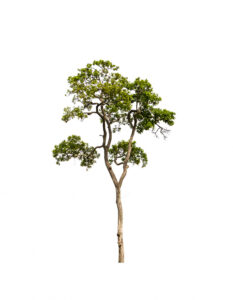A Comprehensive Guide to Caring For Young Trees in Winter:
Introduction: As winter spreads its icy grip, the delicate balance of nature shifts, affecting all living organisms, including trees. Young trees, in particular, require special attention and care to withstand the harsh conditions of the winter months. Oceanside Tree Care Service, with its expertise in arboriculture, offers valuable insights into nurturing young trees during this challenging season. This guide aims to equip tree enthusiasts with the knowledge and techniques necessary to ensure the health and vitality of young trees in winter.
Understanding the Winter Challenges: Winter poses various challenges for young trees, including freezing temperatures, frost, snow accumulation, and dry air. These factors can lead to dehydration, frost damage, root stress, and even death if not properly managed. Understanding these challenges is crucial for effective tree care during the winter months.
Pre-Winter Preparation: Proper preparation is essential for young trees to survive and thrive during winter. Begin by inspecting trees for any signs of disease, pests, or damage. Addressing these issues before winter sets in can prevent further damage during the cold season. Additionally, consider applying a layer of mulch around the base of the tree to insulate the soil and protect roots from freezing temperatures.
Watering: Contrary to popular belief, trees still require adequate hydration during winter. While they may not actively grow, they continue to lose moisture through their leaves and needles, especially during windy days. Oceanside Tree Service recommends watering young trees deeply before the ground freezes to ensure they enter winter well-hydrated. However, be cautious not to overwater, as waterlogged soil can lead to root rot.
Protection from Frost and Wind: Frost and wind can cause significant damage to young trees, particularly those with tender bark and foliage. Consider wrapping the trunks of young trees with protective materials such as burlap or tree guards to shield them from frost and windburn. Additionally, installing windbreaks or erecting temporary barriers can help minimize exposure to harsh winter elements.
Pruning and Maintenance: Winter is an ideal time for pruning young trees, as they are dormant and less susceptible to stress. Remove any dead, diseased, or crossing branches to promote healthy growth and improve the tree’s overall structure. However, avoid heavy pruning during winter, as it may stimulate new growth that is vulnerable to frost damage.

Protecting Roots and Soil Health: Healthy roots are essential for the survival of young trees, especially during winter when they are vulnerable to frost damage and dehydration. Apply a layer of organic mulch around the base of the tree to insulate the soil, retain moisture, and suppress weed growth. Avoid using plastic mulch, as it can hinder airflow and trap moisture, leading to root rot.
Monitoring and Care Throughout Winter: Continuous monitoring is crucial throughout the winter months to ensure the well-being of young trees. Check soil moisture regularly and water as needed, especially during dry spells or when temperatures fluctuate. Keep an eye out for signs of frost damage, such as discolored or wilted foliage, and take prompt action to mitigate further harm.
Professional Assistance: While caring for young trees in winter is manageable for most enthusiasts, seeking professional assistance from reputable arborists like Oceanside Tree Service can provide invaluable support. Arborists have the expertise and resources to assess tree health, diagnose problems, and implement effective solutions to ensure the long-term vitality of young trees.
Conclusion: Caring for young trees in winter requires dedication, knowledge, and proactive measures. By understanding the challenges posed by winter conditions and implementing appropriate care techniques, tree enthusiasts can nurture young trees to withstand the cold season and thrive come spring. With the guidance of experts like Oceanside Tree Service and a commitment to tree care, we can foster healthier, more resilient urban forests for generations to come.
3 Tips for Spotting a Dangerous Tree:
Introduction: Trees are majestic symbols of nature’s beauty, providing shade, oxygen, and aesthetic appeal to our surroundings. However, amidst their splendor, some trees pose hidden dangers that can threaten lives and property. Identifying these hazards is crucial for ensuring the safety of your home and loved ones. Oceanside Tree Service, a trusted name in tree care and safety, offers valuable insights into spotting dangerous trees before disaster strikes. This article presents three essential tips to help homeowners identify and address potential risks posed by trees on their property.
1. Visual Inspection: The first step in spotting a dangerous tree is conducting a thorough visual inspection. Take the time to observe the tree’s overall health and condition, paying attention to any warning signs that may indicate potential hazards. Signs of concern include:
Dead or Dying Branches: Dead or dying branches pose a significant risk of falling, especially during storms or high winds. Look for branches that lack foliage, have brittle bark, or exhibit signs of decay, such as fungus growth or insect infestation. These branches should be promptly removed to prevent them from falling unexpectedly and causing injury or property damage.
Leaning or Tilting Trunk: A tree with a leaning or tilting trunk may indicate root instability or structural weakness. While some trees naturally lean due to environmental factors, excessive leaning or sudden changes in posture could signal underlying issues that require attention. Consult with a certified arborist from Oceanside Tree Service to assess the tree’s stability and determine the best course of action.
Cracks or Splits: Cracks or splits in the trunk or major branches can weaken the tree’s structure, making it susceptible to failure. Inspect the tree for any visible signs of damage, such as deep cracks, vertical splits, or bulging bark. These indicators suggest internal stress or decay and should be evaluated by a professional arborist to assess the tree’s safety and stability.
2. Soil and Root Evaluation: The health and stability of a tree’s root system are essential factors in determining its safety. Conducting a soil and root evaluation can provide valuable insights into the tree’s overall health and potential risks. Consider the following aspects when assessing soil and root conditions:

Compacted Soil: Compacted soil can restrict root growth and compromise the tree’s stability. Look for signs of soil compaction, such as surface cracking, water runoff, or shallow root penetration. Aerating the soil and implementing proper drainage measures can help alleviate compaction and promote healthy root development.
Exposed Roots: Exposed roots can indicate soil erosion or disturbance, compromising the tree’s anchorage and stability. Inspect the area around the tree for exposed roots, particularly those located on slopes or near construction sites. Implement erosion control measures, such as mulching or terracing, to protect the tree’s root system and prevent further soil loss.
Root Decay: Root decay is a common issue that can weaken the tree’s support system and increase the risk of failure. Look for signs of root decay, such as soft or spongy roots, fungal growth, or reduced foliage density. If root decay is suspected, consult with a certified arborist to assess the extent of damage and determine the best course of action.
4. Professional Assessment: While homeowners can identify some warning signs of a dangerous tree, certain issues may require the expertise of a certified arborist. Oceanside Tree Service recommends scheduling a professional assessment for trees exhibiting any of the following characteristics:
Multiple Warning Signs: Trees displaying multiple warning signs, such as dead branches, leaning trunks, and root decay, pose a heightened risk of failure and should be evaluated by a professional arborist. An arborist can conduct a comprehensive assessment of the tree’s health and structure, identify potential hazards, and recommend appropriate mitigation measures.
Large or Mature Trees: Large or mature trees require specialized care and attention due to their size and complexity. A professional arborist has the knowledge, experience, and equipment to safely assess and manage these trees, reducing the risk of injury or property damage.
Proximity to Structures or Utilities: Trees located near structures, utilities, or high-traffic areas pose an increased risk of damage in the event of a failure. A professional arborist can assess the tree’s proximity to nearby objects, evaluate potential risks, and recommend appropriate measures to mitigate hazards and ensure safety.
Conclusion: Spotting a dangerous tree requires vigilance, attention to detail, and a thorough understanding of potential hazards. By conducting regular visual inspections, evaluating soil and root conditions, and seeking professional assessment when necessary, homeowners can identify and address potential risks posed by trees on their property. With the expertise of certified arborists from Oceanside Tree Service and a commitment to safety, we can safeguard our homes, families, and communities from the dangers of unstable or hazardous trees.
